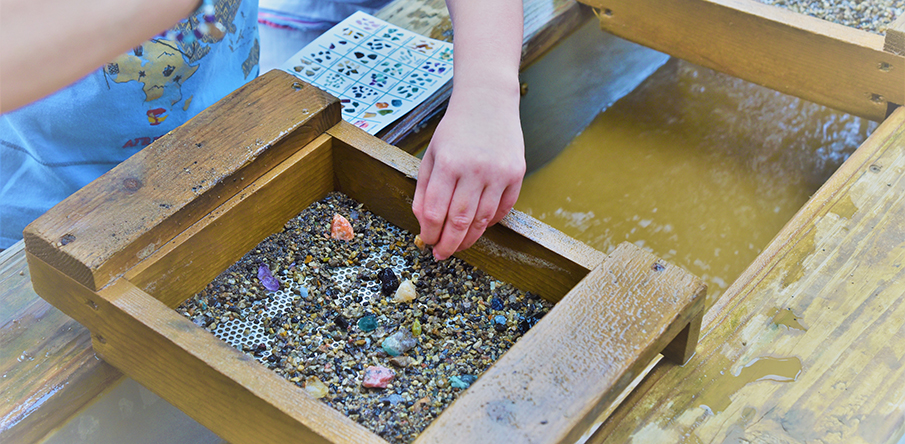Michele Beacom - 14 February 2020
CIM has partnered with Science North to develop a mineral literacy program to increase awareness of the vauable contribution our industry makes to society
By Michele Beacom
Mining has an essential role in a greener and sustainable future, yet most Canadians don’t realize that. There is a widespread lack of understanding about the minerals and metals industry and the contributions it makes to our economy and the quality of our everyday lives. Too often, perceptions of our industry are based on outdated information or on the way mining is often portrayed in popular media.
To help change that perception, CIM has partnered with Science North, Canada’s second-largest science centre and specialists in travelling exhibit design, to develop a pan-Canadian travelling exhibit to increase and improve public awareness of the minerals and metals industry.
Our Earth’s Riches, the working title, will feature overarching themes on environmental responsibility, diversity in the workforce, Indigenous involvement in mining, safety and social responsibility. The exhibition will also help promote mineral literacy through interactive visitor experiences that will be educational, entertaining and engaging. Featuring virtual reality, multimedia and innovative experiences, the modular exhibit will allow venues to size up or down, depending on available exhibit space.
“This really is a step change in terms of public outreach for the mining industry and we believe it will increase awareness of the importance of minerals to our quality of life,” said CIM President Roy Slack. “We are excited to be working with Science North to create a memorable experience for visitors.”
Science North, located in Sudbury, will lead the creative process for the exhibition, with CIM acting as the technical support and representatives from the CIM Societies providing expert review. Over its 35-year history, Science North has worked with the minerals and metals industry on many of its programs and exhibits, as well as operating Dynamic Earth, an earth sciences and mining centre and home of the Big Nickel.
“The secret to engaging audiences over the five-year life of a travelling exhibit is research and front-end evaluation to identify gaps in the knowledge base of the audience,” said Julie Moskalyk, science director at Science North, which has put together 15 travelling exhibits of this magnitude since 2003. An exhibit assessment tool, created in partnership with a science communication graduate program at Laurentian University, is used to measure levels of engagement behaviours. Those findings are used to create and improve the exhibits’ audience impact.
“A key measure of success of this project will be the engagement of the visitors,” said Slack.
“This is critical because we need to do more than just educate, we need to create a memorable visitor experience, and that is what the Science North people are very good at doing.”
Other measures of success of the project, said Moskalyk, will be the number of communities that book the exhibit; the ability to fundraise the targeted $1 million; and designing and building the 600-square-metre exhibit on schedule and on budget.
This ambitious project is currently in the fundraising phase, but Slack hopes to see the design/build start by mid-2020, with a launch in 2021.
“It all depends on our ability to raise the funds,” said Slack. “We are at about $400,000 now toward our $1 million portion, so we still have some work to do to raise the balance.” Science North is supporting the project through an additional $500,000 investment in capital, said Slack.
Our Earth’s Riches comes on the heels of the Canadian Minerals and Metals Plan (CMMP). The CMMP, released last March, was developed by federal, provincial and territorial governments and other stakeholders as a strategy to raise Canadians’ awareness of the importance of the minerals and metals sector. The federal government, having reviewed Our Earth’s Riches, has indicated that the project is line with the CMMP. CIM will be exploring ways in which Our Earth’s Riches can play a key part in the federal government’s mineral literacy goals.
Consisting of three 200-square-metre “pods,” the full exhibit would occupy 600 square metres, which works well for larger science centres, museums and public attractions. The individual pods can be separated and displayed in smaller science centres and other venues, allowing for maximum reach and engagement of the exhibit. Much of the technology and interactive material is computer-based, so although the physical exhibit is built of material, the content can be updated as new technology becomes available in the industry.
“We intend to display the high-tech nature of the minerals and mining industry, and our sector’s commitment to safe and sustainable development,” said Slack.
Over a five-year period, the Our Earth’s Riches exhibit will travel to various Canadian locations and be experienced by people from all walks of life. Some of the largest science centres who will host the exhibit have annual attendance exceeding one million people a year. For this exhibit it has been estimated that attendance could be in the order of 300,000 visitors per year with the potential for the exhibit to reach 1.5 million people over its five-year tour. However, said Slack, “it is also important that it gets to smaller communities as well, so we may be sacrificing total visitor numbers for wider coverage across Canada.”
This is not the first program CIM has launched to raise awareness among youth about the importance of mining. CIM’s Mining for Society (M4S) program reached 75,000 people over a 10-year period. M4S was offered during various CIM events free of charge to schools and members of the general public to help them understand the importance of mining in their daily lives. By establishing this permanent year-round display and moving it to different science centres, CIM hopes to achieve far greater outreach.
 - dev.png)


